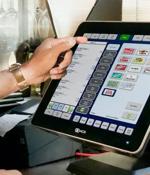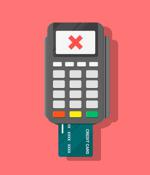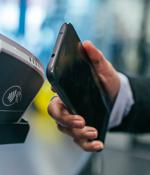Security News

A new Android malware-as-a-service (MaaS) platform named SuperCard X can facilitate near-field communication (NFC) relay attacks, enabling cybercriminals to conduct fraudulent cashouts. The active...

UK bakery chain Greggs is the latest victim of recent point of sale system outages that forced store closures at large retail chains over the past few weeks. Greggs is a bakery chain with 2,300 branches across the UK, selling sausage rolls, baked goods, sandwiches, and sweets.

The point-of-sale (PoS) terminals from PAX Technology are impacted by a collection of high-severity vulnerabilities that can be weaponized by threat actors to execute arbitrary code. The STM Cyber...

NCR is suffering an outage on its Aloha point of sale platform after being hit by an ransomware attack claimed by the BlackCat/ALPHV gang. After days of silence, NCR has disclosed today that the outage was caused by a ransomware attack on data centers used to power their Aloha POS platform.

Kaspersky discovered two new Prilex variants in early 2022 and found a third in November that can target NFC-enabled credit cards and block contactless transactions, forcing payers over to the less-secure PIN machines. "Contactless credit cards offer a convenient and secure way to make payments without the need to physically insert or swipe the card," the researchers wrote.

Prilex is particularly experienced with payment markets, electronic funds transfer software and protocols, and the threat actor has recently updated its POS malware to block contactless transactions to steal your credit card information. This resulted in cybercriminals' POS malware seeing a huge decrease in the number of transactions it could abuse.

The Brazilian threat actors behind an advanced and modular point-of-sale malware known as Prilex have reared their head once again with new updates that allow it to block contactless payment transactions. Having evolved out of ATM-focused malware into PoS malware over the years since going operational in 2014, the threat actor steadily incorporated new features that are designed to facilitate credit card fraud, including a technique called GHOST transactions.

New versions of the Prilex point-of-sale malware can block secure, NFC-enabled contactless credit card transactions, forcing consumers to insert credit cards that are then stolen by the malware. On a payment terminal, contactless transactions use NFC chips embedded in credit cards and mobile devices to conduct close-proximity payments via credit cards, smartphones, or even smartwatches.

Two point-of-sale malware variants have been put to use by a threat actor to steal information related to more than 167,000 credit cards from payment terminals. While a significant proportion of attacks aimed at gathering payment data rely on JavaScript sniffers stealthily inserted on e-commerce websites, PoS malware continues to be an ongoing, if less popular, threat.

A new report from Kaspersky sheds light on the 2020-2022 ATM and Point of Sale malware landscape. Lockdowns all around the globe during the pandemic have seriously reduced ATM and PoS malware activity, since people stayed at home with no other possibility than buying what they needed online instead of physically going to shops.